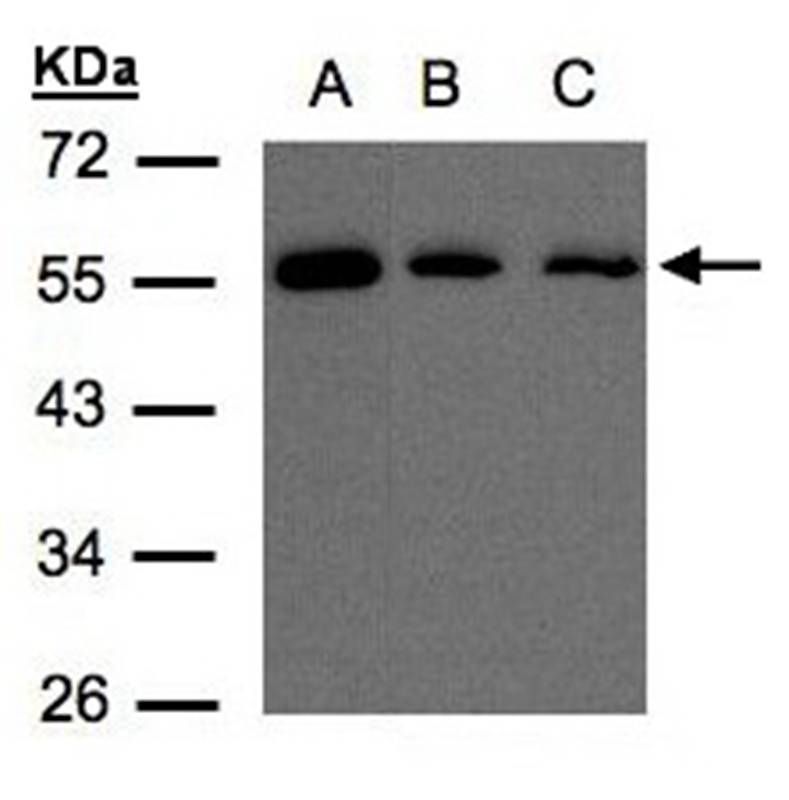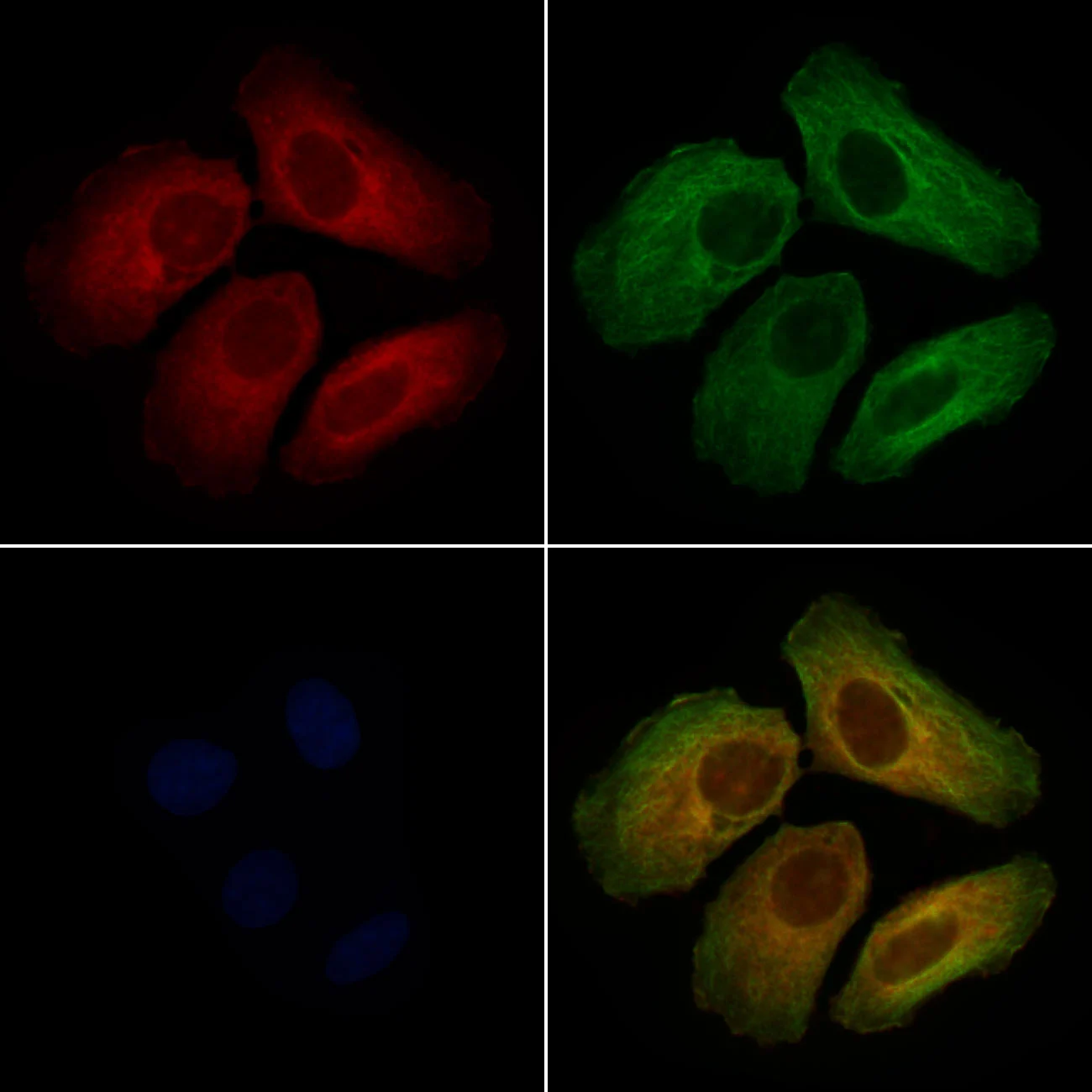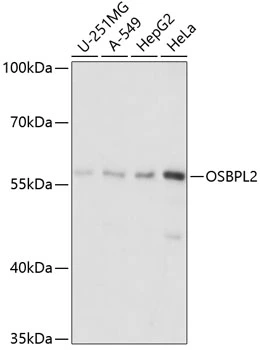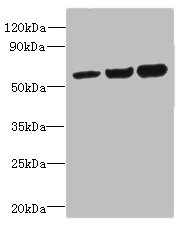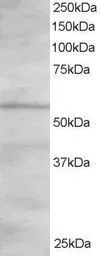
WB analysis of human heart lysate using GTX25921 OSBPL2 antibody, C-term. Dilution : 1.5microg/ml Loading : 30microg protein in RIPA buffer
OSBPL2 antibody, C-term
GTX25921
ApplicationsWestern Blot
Product group Antibodies
ReactivityHuman
TargetOSBPL2
Overview
- SupplierGeneTex
- Product NameOSBPL2 antibody, C-term
- Delivery Days Customer7
- Application Supplier NoteWB: 1-2microg/ml. *Optimal dilutions/concentrations should be determined by the researcher.Not tested in other applications.
- ApplicationsWestern Blot
- CertificationResearch Use Only
- ClonalityPolyclonal
- Concentration0.50 mg/ml
- ConjugateUnconjugated
- Gene ID9885
- Target nameOSBPL2
- Target descriptionoxysterol binding protein like 2
- Target synonymsDFNA67, DNFA67, ORP-2, ORP2, oxysterol-binding protein-related protein 2, OSBP-related protein 2
- HostGoat
- IsotypeIgG
- Protein IDQ9H1P3
- Protein NameOxysterol-binding protein-related protein 2
- Scientific DescriptionThis gene encodes a member of the oxysterol-binding protein (OSBP) family, a group of intracellular lipid receptors. Most members contain an N-terminal pleckstrin homology domain and a highly conserved C-terminal OSBP-like sterol-binding domain, although the encoded protein contains only the sterol-binding domain. In vitro studies have shown that the encoded protein can bind strongly to phosphatic acid and weakly to phosphatidylinositol 3-phosphate, but cannot bind to 25-hydroxycholesterol. The protein associates with the Golgi apparatus. Transcript variants encoding different isoforms have been described. [provided by RefSeq, Sep 2014]
- ReactivityHuman
- Storage Instruction-20°C or -80°C,2°C to 8°C
- UNSPSC12352203

